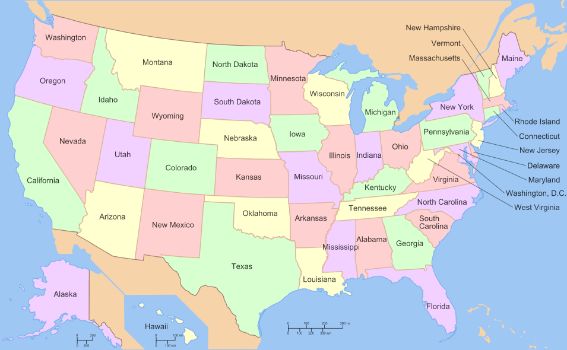According to the latest report by the U.S. Department of Agriculture (USDA), the average cost of raising a child from birth to age 18 was estimated to be about $310,650, or roughly $17,000-$18,000 per year. This figure includes expenses such as housing, food, transportation, healthcare, clothing, education, and childcare, among others.

Major Chunks of Income Spend on Raising a Child
The child-raising costs can be divided into different categories. A household with an annual family income of $75,000 may have a following spending pattern for their child.
Housing (29%)
Housing costs can vary significantly based on location, size, and type of housing. On average, a family might spend 25-30% of their income on housing, amounting to $18,750-$22,500 annually. Costs may increase slightly with more children, but the per-child cost may decrease due to shared living spaces.
Education (16%)
Public schooling is generally free, but additional costs like supplies, extracurricular activities, and field trips can add up. For private schools, tuition can vary widely. On average, a family might spend $1,000-$5,000 per child per year on education-related expenses, with higher costs for private schools.

Food (18%)
Feeding one child may cost around $1,500-$2,500 per year, depending on their age and dietary needs. With three children, this could increase to around $4,500-$7,500 annually. Bulk purchases and meal planning can help reduce per-child costs.
Transportation (15%)
A family’s transportation costs, including car payments, insurance, gas, and maintenance, might be around $8,000-$12,000 annually. While the cost may increase slightly for a larger vehicle, the per-child cost may decrease due to shared transportation.
Health (9%)
Health insurance premiums and out-of-pocket expenses can vary. A family might spend $4,000-$8,000 annually on healthcare costs, with expenses potentially increasing with more children due to increased medical needs.

Clothes (6%)
Clothing costs can range from $500-$1,000 per child per year, depending on age, growth, and preferences. With multiple children, costs may decrease due to hand-me-downs and shared items.
Miscellaneous (7%)
Miscellaneous expenses, including childcare, extracurricular activities, and entertainment, can range from $2,000-$5,000 per child per year. Some of these costs may decrease per child with more children due to shared activities or sibling discounts.
Factors that Affect the Cost of Raising a Child
Geographical Location
The cost of living can vary widely across the United States, with more expensive cities typically having higher housing, food, and childcare costs. Some of the costliest cities for raising a child in the U.S. include San Francisco, New York City, and Washington D.C.
In contrast, more affordable cities for raising a child might include El Paso, Wichita, and Memphis. Remember that the cost of living in these cities may change over time, so it’s essential to research current costs when deciding where to live.

Childcare
Childcare costs can be a significant factor in the overall cost of raising a child. Childcare expenses can range from a few hundred to several thousand dollars per month, depending on location, type of childcare (e.g., daycare, nanny, or in-home care), and the child’s age. Families with multiple children often face higher childcare costs, although some facilities may offer sibling discounts.
Number of Children
As the number of children in a family increases, overall costs will rise. However, some economies of scale can help reduce the cost per child. For example, housing and transportation costs may not increase proportionally with each additional child, and families can benefit from sharing resources, such as clothing, toys, and other items.
| Family Income | Spending over 18 Years |
| $0-$25K | $120,300 |
| $25-$50K | $181,800 |
| $50K-$75K | $217,200 |
| $75K-$100K | $248,700 |
| $100K-$125K | $266,100 |
| $125K-$150K | $274,500 |
| $150K-$175K | $325,800 |
| $175K+ | $376,500 |
These values are taken from a post published in Washington Post. You can use their calculator to learn about annual spending and spending according to age.
Lifestyle Choices
Personal decisions about childcare, education, extracurricular activities, and other spending categories can significantly impact the overall cost of raising a child. For example, families who choose private schools, specialized extracurricular activities, or luxury items will likely face higher costs than those who opt for public schools, more affordable activities, or budget-conscious purchases. Additionally, lifestyle choices related to healthcare, nutrition, and entertainment can affect the overall cost of raising a child.
Strategies to Reduce Costs when Raising a Child
Save money for your child
Establishing a savings plan or opening a dedicated savings account for your child’s future expenses, such as education, healthcare, and other essentials, can help reduce financial strain. Contributing regularly to this account and taking advantage of compound interest can help you build a strong financial foundation for your child’s future.
Plan ahead
Anticipating and budgeting for future expenses can help you avoid financial surprises and make more informed spending decisions. Creating a detailed budget for short-term and long-term expenses can help you stay on track and identify areas where you can save.
Avail parent-friendly tax credits and deductions
Take advantage of tax credits and deductions available to families with children, such as the Child Tax Credit, Earned Income Tax Credit, and the Child and Dependent Care Credit. Additionally, explore tax-advantaged savings accounts like 529 plans for education expenses or Health Savings Accounts (HSAs) for healthcare expenses.
Restraint yourself from spending
Focus on purchasing necessary items and avoiding impulse buys. Prioritize needs over wants and look for ways to save on everyday expenses, such as shopping sales, using coupons, and comparing prices before purchasing.
Hand down stuff from elder to younger child
Reusing items like clothing, toys, and baby gear can significantly reduce costs for families with multiple children. By passing down items from one child to another, you can save on purchasing new items for each child.
In addition to these strategies, families can consider other cost-saving measures, such as seeking affordable childcare options, cooking meals at home instead of dining out, and participating in free or low-cost community activities and resources. By proactively managing expenses and adopting cost-saving strategies, families can help reduce the financial strain of raising a family.

How Child Raising Costs Vary with the Number of Children?
The cost of raising children can vary significantly based on the number of children a family has. While it’s true that each additional child will add to the overall cost, there are also economies of scale that can help reduce the cost per child. Here are some ways that costs might be affected by the number of children in a family.
Shared expenses
Some costs like housing and utilities may not increase proportionally with each additional child. Families can often share resources, such as bedrooms or household items, which can help lower the per-child cost.
Hand-me-downs
Clothing, toys, and other items can often be passed down from one child to another, reducing the need to purchase new items for each child.
Childcare and education
In some cases, the cost of childcare and education can be reduced for families with multiple children. For example, some daycare centers and schools offer sibling discounts or reduced tuition for families with more than one child enrolled.
Food
While the overall cost of food will increase with each additional child, families may be able to take advantage of bulk purchases or family-sized meal planning to help reduce the per-child cost.

Transportation
With more children, there might be an increased need for a larger vehicle, but the cost of that vehicle can be spread across multiple children, reducing the per-child cost. Additionally, carpooling with other families or siblings participating in the same extracurricular activities can help save on transportation costs.
Despite these potential cost savings, it’s essential to remember that each additional child will still increase overall costs, including healthcare, education, and other miscellaneous expenses. The impact on a family’s budget will vary based on their unique circumstances and personal choices. It’s helpful to create a detailed budget considering all factors when planning for the financial implications of having multiple children.
Frequently Asked Questions
What are the most expensive cities to raise a child in the US?
The most expensive cities to raise a child in the US typically include San Francisco, New York City, and Washington D.C., as these cities have high living costs, including housing, childcare, and education expenses.
What are the least expensive cities to raise a child in the US?
El Paso, Wichita, and Memphis are some of the least expensive cities to raise a child in the US. These cities generally have lower living costs, more affordable housing, and lower childcare and education expenses.
How much does it cost to raise a child for the first year?
Raising a child during their first year can range from $10,000 to $15,000, depending on healthcare, childcare, and other baby-related expenses. Remember that these figures are rough estimates; actual costs can vary based on individual circumstances and choices.
What other things do parents have to spend for raising their child?
- Hobbies
- Family trips
- Vacations
- Presents and gifts
- Birthday parties
- Extracurricular actives
- Toys
- Pets
- School fees for trips, activities, fundraisers
- Pocket money